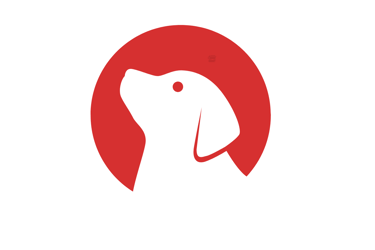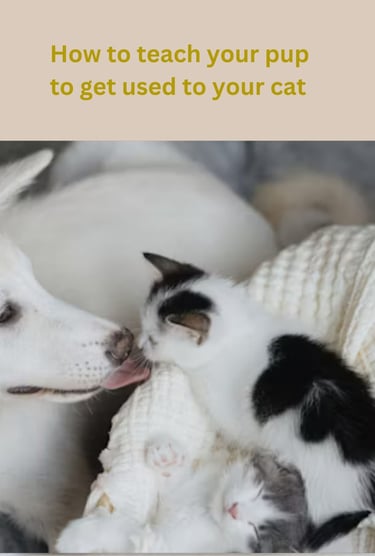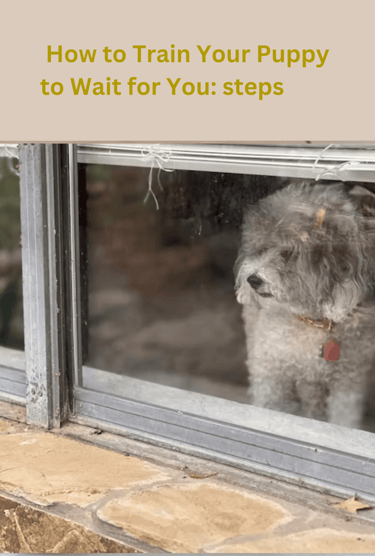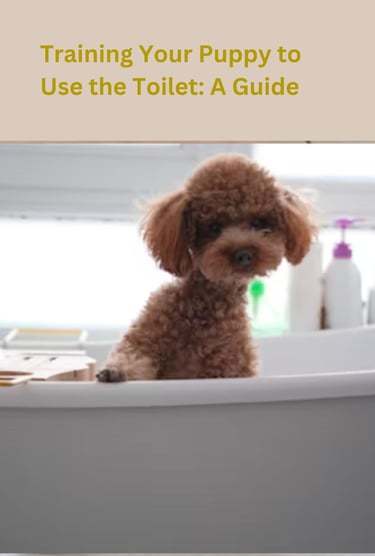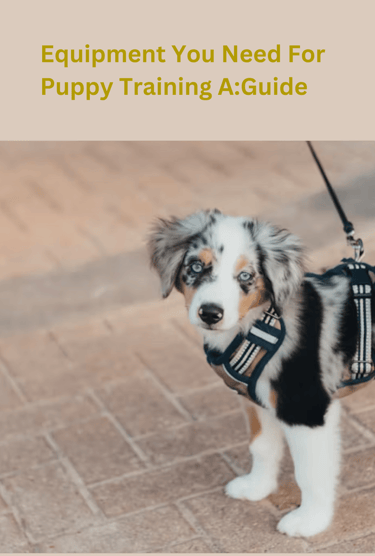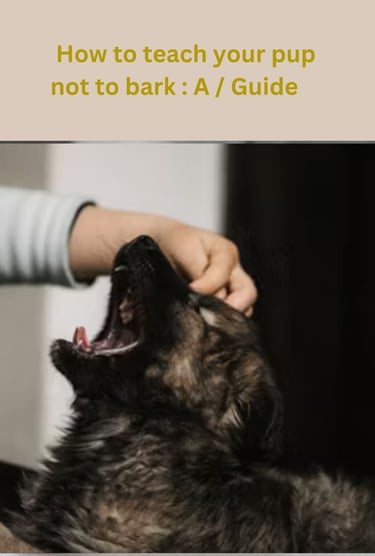Mastering Puppy Manners: How to Teach Your Puppy Not to Jump on People
Understanding the reasons behind this jumping tendency is crucial for pet owners aiming to implement effective training strategies.


Understanding Why Puppies Jump
Puppies are known for their playful and exuberant behavior, often manifesting in the form of jumping on people.
This instinctive behavior can be attributed to a variety of factors rooted in their natural instincts and emotional responses. Understanding the reasons behind this jumping tendency is crucial for pet owners aiming to implement effective training strategies.
One of the primary reasons puppies jump is their innate instinct to greet others. In the wild, canines would nuzzle and jump to establish social connections within their pack.
This behavior translates into a puppy's eagerness to interact and bond with humans. When a puppy jumps on a person, it is often a form of greeting that conveys enthusiasm and affection.
Furthermore, the leap may indicate a desire for attention, affirming that the puppy seeks engagement with their human companions.
Another contributing factor is a puppy's excitement levels.
Young dogs are filled with boundless energy, and their instincts compel them to express this energy physically. When they encounter their owners or new acquaintances, that excitement may lead to jumping as a response to an immediate social stimulus.
This behavior is particularly pronounced in the presence of strangers or during playtime, often resulting in an exuberant display of affection that may be misinterpreted as unruly behavior.
Additionally, puppies may jump as a way to solicit attention or reinforce their social status. In a puppy's mind, jumping may lead to positive outcomes, such as pats and verbal praise.
Consequently, they may repeat this behavior with the expectation of receiving attention or affirmation.
Acknowledging these underlying motivations is essential for trainers, as it allows for the development of tailored training techniques that redirect this jumping behavior while reinforcing positive interactions.
Setting Up for Success: Preparing for Training
Training a puppy not to jump on people requires careful preparation to ensure a successful outcome. Establishing an ideal training environment plays a crucial role in facilitating effective learning.
The area should be free from distractions such as loud noises, other pets, or excessive foot traffic. A calm, quiet space allows the puppy to focus better on the training session and absorb the instructions being conveyed.
Gathering the necessary tools before starting the training is essential. Treats act as a significant motivator for puppies and can help reinforce positive behaviors.
Choose high-value treats that your puppy finds irresistible, as this will encourage good behavior during training sessions.
Additionally, incorporating toys can provide an engaging way to redirect the puppy's energy and attention, especially when transitioning between training commands.
Considering the puppy's energy levels is also paramount. Puppies have varying degrees of energy, and training should be scheduled at times when the puppy is calm yet attentive.
Early morning or after a long walk can be ideal times to train, as the puppy will likely be more focused and ready to learn.
Consistency is vital in reinforcing learned behaviors, so establishing a regular training routine will enhance recall and obedience.
Choosing the right time and location for training sessions is a significant factor in a puppy's learning journey.
It is imperative to conduct short, frequent training sessions—approximately 5 to 10 minutes—throughout the day to prevent overwhelming the puppy.
By making each session enjoyable and rewarding, you can lay a solid foundation for good manners, ultimately leading your puppy to understand not to jump on people.
Preparation and commitment play pivotal roles in setting the stage for positive training experiences.
Effective Training Techniques to Curb Jumping
Training a puppy not to jump on people requires patience and consistency, but with effective techniques, this behavior can be managed successfully. One of the most effective methods is rewarding calm behavior.
Whenever your puppy approaches you without jumping, offer praise or a treat immediately. This reward reinforces the idea that calmness leads to positive outcomes, encouraging your puppy to replicate this behavior in the future.
In addition to rewarding calmness, teaching alternative behaviors is crucial. For instance, you can train your puppy to sit when greeting someone instead of jumping.
To start, ask your puppy to sit and only reward them once they are in the sitting position. If your puppy jumps instead, withhold the reward and wait for them to settle down. Over time, they will learn that sitting, rather than jumping, earns rewards.
Using clear commands aids in curbing jumping behaviors effectively. Commands like "sit," "down," or "stay" can redirect your puppy's focus and energy away from jumping. Consistently using these commands will help your puppy understand the behavior you expect from them.
Timing is key; rewards should be given within seconds of the desired behavior to reinforce the learning process.
Incorporating distractions can also be beneficial. When you expect visitors, prepare some toys or treats to keep your puppy engaged while the doorbell rings or when guests arrive.
This strategy prevents jumping by redirecting their energy toward something appropriate. Redirecting your puppy's attention helps them focus on acceptable behaviors and keeps them calm during exciting situations.
Through consistent application of these techniques, such as rewarding calm behavior, teaching alternative responses, utilizing commands, and employing distractions, you can significantly reduce the propensity of your puppy to jump on people.
Establishing a routine and being persistent will pave the way for well-mannered interactions in the future.
Maintaining Consistency and: Addressing Common Challenges
Consistency is a fundamental principle in effectively training a puppy not to jump on people.
Establishing a routine and sticking to it can significantly influence your puppy’s behavior.
It is essential that all family members apply the same commands and use similar techniques when interacting with the puppy.
This uniform approach helps reinforce what is acceptable and what is not, reducing confusion for your pet.
A mixed message can lead to setbacks, promoting the very behavior you are working to eliminate, such as jumping.
One common challenge faced by pet owners is when visitors come to the house.
A puppy may become overly excited by the presence of new people, resorting to jumping as a means of greeting.
To mitigate this behavior, preparation is key. Inform your guests ahead of time to ignore the puppy until it calms down.
Providing an alternative like a designated space or toy for the puppy to redirect its energy can also be beneficial.
When the puppy remains calm during the greetings, rewarding this good behavior with treats or affection reinforces this positive approach.
New environments can also provoke jumping; adjusting to unfamiliar settings can occasionally overwhelm your puppy. It’s advisable to introduce your puppy gradually to various environments, allowing it to explore at its own pace.
Always use a gentle yet firm approach, rewarding calm behavior consistently when out and about. Patience is paramount during these transitions, as rushing the process can lead to regression.
In conclusion, maintaining consistency, managing common challenges, and having realistic expectations can greatly enhance your training efforts.
Reinforcing desired behavior through patience and persistence will cultivate a well-mannered puppy over time, leading to positive interactions with people.
Remember, training takes time, and the journey is just as important as the destination.

